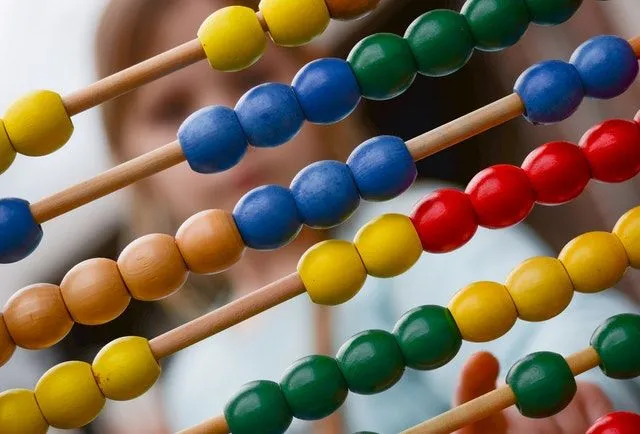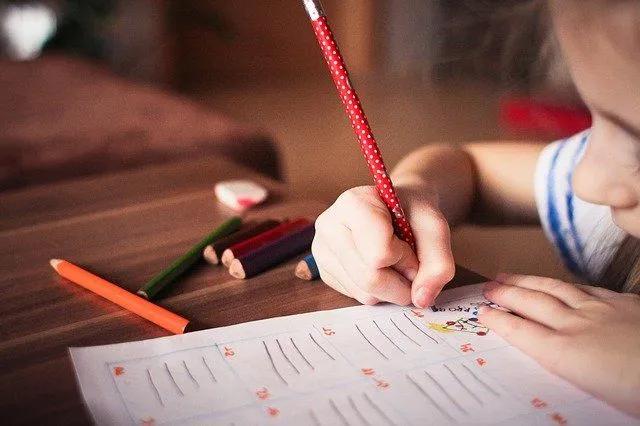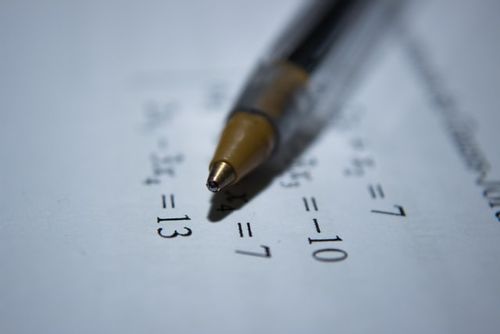FOR ALL AGES
Addition is a step which children pick up quite naturally as soon as they begin to learn counting.
Throughout kindergarten and first grade, adding physical objects together is really important. It reinforces children’s comprehension of place value.
Later on, when children become confident adding piles of objects together, they can move on to using number lines or counting on in their heads. When children have understood this, they can begin to learn their addition facts and progress on to more complex math. Here’s where you might have heard of addition facts to 20, and there’s no need to feel worried about this step, let’s take a look at how you can teach 1st-grade addition to your kids. If you are looking for further math facts check our addition facts to 10 and doubles facts.
The addition facts to 20 are, simply put, the sums from 0+0 up to 10+10. They’re the foundation steps of arithmetic, and usually, the very first math facts that children acquire. Many schools recommend that children fully master the 20 addition facts by the end of the 1st grade (and no later than the middle of 2nd grade). Adding to 20 paves the way to the rest of successful math learning.
Learning the addition math facts to 20 helps children comprehend the principles of any addition sums better. One key concept that kids learn as they acquire the addition fact strategy is the idea of the commutative property. It’s a long name, but it just means that we can add numbers in any order and get the same outcome. For example, 3 + 5 equals 5 + 3, or 6 + 4 equals 4 + 6. (The commutative property also reduces the number of facts that kids need to master; once they know 6+4, they already know 4 + 6.)
Learning the addition facts also prepares kids for regrouping and “carrying on the one” when they start adding larger numbers. For example, when kids add 6+5, they discover that they have one group of ten, with one leftover, or 11. This is precisely the same kind of thinking they’ll need to do when they start adding two-digit numbers vertically and with further addition practice.

The secret to learning the up to 20 addition facts is all about making it real, tangible and fun. Kitchen fun is one great way. Anything you can eat makes math fun and engaging! Take a packet of cookies, a container of small sweets, and start by placing 8 in front of your child. Count them. Now put three more down in front of your child. Count again. So 8 + 3 makes 11. Try the same thing but this time begin with 9 (count) and add a bigger number like 7 or 8 (count again). Share with your child how slow this addition fact counting process can be!
Teaching counting on is a useful skill when adding small numbers ie (1, 2, 3 or maybe 4) to a larger number. Many children find counting on tricky; however, as they begin by counting the larger number within 20 rather than counting on to the next. One useful method is to start by physically keeping the big number to one side and the smaller number to the other side. Once your child becomes familiar with the strategy, dividing them will no longer be required.
Place 9 tangible items (such as sweets, beads or small bears) on the table, slightly to the left of your child. Now, line up 3 of the same things, slightly to the right of your child. Point to the group of 9 and count them. Then, make overly exaggerated hops as you count with your finger.
Begin with your finger on the first number and then “jump” along counting 1, 2, 3 or 4 to get your answer within 20. Discuss which is easier to work out? Do you feel it’s more comfortable to add 3 + 3 or 3 + 8 using the counting on method? Together you can try this by finger hopping with a number line to learn facts about addition. Begin with a finger on 9 and then hop along counting 1, 2 to get to the answer. Now start on 2 and jump along with counting 1, 2, 3, 4, 5, 6, 7, 8, 9. You can try this strategy with 3 + 8 and 8 + 3 as well as other pairs of numbers.

You may notice some children will be able to add 2, 3 or 4 by counting on in their head without any extra support or advice. For those children who require additional help, you can show them how to use the “head and fingers” method. What is 9 plus 2? Explain to the child how to point to their head with their non-dominant hand, saying 9. Then count on 2 using the fingers of their other hand - 10, 11. The answer is 11. What is 9 plus 3? Point to their head - 9 - and count on 3 on the fingers - 10, 11, 12. The answer is 12. Try to do this in a rhythm and have fun while doing it to master addition facts. For example 11 add 2 is 11 (head), 12 (finger), 13 (finger), with a stress on the 13! After a while, you can suggest to “keep” the first number in their head mentally rather than pointing to their head.
Count on facts methods and number lines are an excellent way to get children started on adding more significant numbers, but both have their limitations. Counting on gets trickier when you are adding bigger numbers together, and number lines aren’t always available or practical for all additions problems.
Should one of the 2 numbers to be added be greater than 10 but within 20, children can make use of this next method to learn addition facts. It’s a handy way to practice for mental math agility later as the child gets older, and also shows the concept of “tens” and “units” - without going into too much detail for the first time. The higher number is separated into one “ten” and a number unit. The units are then added together, and that total is added to 10. So, for example: 13 + 5 becomes 10 + 3 + 5 or 10 + 8, or 18.
Using flashcards with your child is a brilliant and visual way to learn addition math facts within 20. They can be taken when you are out, played within a fun game, or used daily until your child recalls their facts off by heart. Flashcards are also a fun way to get your child to speed up with learning the addition facts to 20. Addition worksheets are also a great way to extend your teaching and check your child is comprehending. As you transition away from using tangible objects and from 1st grade and into more complex 2nd-grade work, stock up on plenty of addition worksheets.
Games are a fantastic way to generalize taught math skills, in what some learners may find a tricky topic. You can readily play basic addition and subtraction games by using a deck of cards. One straightforward game is Addition Sums War: Each player turns over two cards and has to add them up, and the player with the higher number gets to keep the cards. Continue the game until one player loses all of their cards. You can use games as a bridge to math worksheets and if math worksheets are too tricky, take a look at them and think about how to turn it into a game. This is a great tip for both addition and subtraction worksheets.
Here at Kidadl, we have carefully created lots of interesting family-friendly facts for everyone to enjoy! If you liked our suggestions for Addition Facts To 20 Explained To Kids, then why not take a look at these numbers facts or facts about the number 5?
Read The Disclaimer
At Kidadl we pride ourselves on offering families original ideas to make the most of time spent together at home or out and about, wherever you are in the world. We strive to recommend the very best things that are suggested by our community and are things we would do ourselves - our aim is to be the trusted friend to parents.
We try our very best, but cannot guarantee perfection. We will always aim to give you accurate information at the date of publication - however, information does change, so it’s important you do your own research, double-check and make the decision that is right for your family.
Kidadl provides inspiration to entertain and educate your children. We recognise that not all activities and ideas are appropriate and suitable for all children and families or in all circumstances. Our recommended activities are based on age but these are a guide. We recommend that these ideas are used as inspiration, that ideas are undertaken with appropriate adult supervision, and that each adult uses their own discretion and knowledge of their children to consider the safety and suitability.
Kidadl cannot accept liability for the execution of these ideas, and parental supervision is advised at all times, as safety is paramount. Anyone using the information provided by Kidadl does so at their own risk and we can not accept liability if things go wrong.
Kidadl is independent and to make our service free to you the reader we are supported by advertising.
We hope you love our recommendations for products and services! What we suggest is selected independently by the Kidadl team. If you purchase using the buy now button we may earn a small commission. This does not influence our choices. Please note: prices are correct and items are available at the time the article was published.
Kidadl has a number of affiliate partners that we work with including Amazon. Please note that Kidadl is a participant in the Amazon Services LLC Associates Program, an affiliate advertising program designed to provide a means for sites to earn advertising fees by advertising and linking to amazon.
We also link to other websites, but are not responsible for their content.
Was this article helpful?



Browse Category

We’ll send you tons of inspiration to help you find a hidden gem in your local area or plan a big day out.



Check your inbox for your latest news from us. You have subscribed to:
Remember that you can always manage your preferences or unsubscribe through the link at the foot of each newsletter.